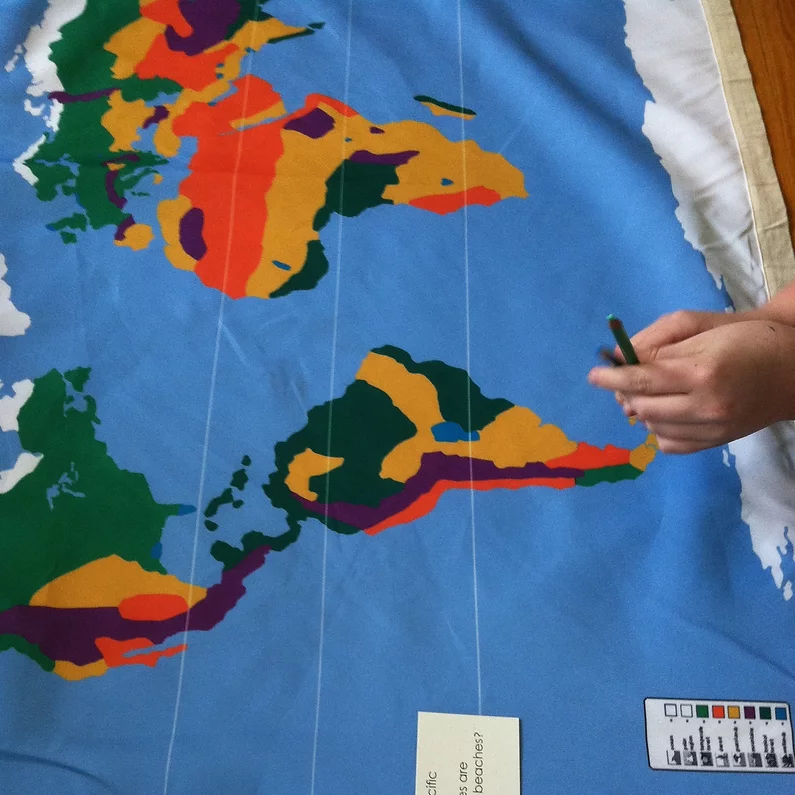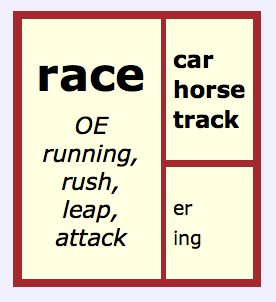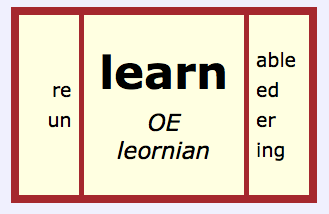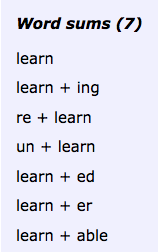Book Study: Westward Expansion
updated August 19, 2023
Recorded here is my own personal collection of articles, resources, favorite links, teaching ideas, and lesson plans. It encompasses many years, from the very beginning of my experience studying and learning about Waldorf to the present time. People from all around the world visit my site and recommend it to others. Welcome!
This site records my journey. I hope my honesty is encouraging and helps break down some barriers that may prevent people from trying Waldorf methods. Because this is an ongoing site documenting my curriculum planning and ideas, some materials are more Waldorf-y than others. Please feel free to take what you like and leave the rest.
This page has helpful links and LOADS of free resources to help you plan your eighth grade year. Enjoy!
Mission Statement - Consulting Services - Lending Library
Book Study: Westward Expansion
for Class 8
Part of a year-long ONLINE COURSE:
Waldorf Main Lesson Block Planning: U.S. History

Join a community of fellow homeschool parents planning this exact same topic for plenty of help and support.
This course is aimed at homeschool families who are already familiar with the Waldorf method, but
would appreciate extra feedback and encouragement in planning this block.
Monthly story and activity suggestions, including primary source materials,
are included for each part of U.S. History as we travel from Colonial Times to the present day. Historical fiction, online resources,
essay questions and traditional assignments to help students prepare for high school, and more! Make friends and ask specfic questions of
an experienced Waldorf homeschool teacher and consultant as you work through this inspiring, do-able, step by step course.
Lifetime access.
Just $50.00!
Summer 2022
My second time doing a book study for Westward Expansion, I chose a nonfiction resource. This was
Steve Sheinkin's Which Way To The Wild West? Everything Your Schoolbooks Didn't Tell You About Westward Expansion.
We combined that block with Grade 4 Local History & Geography (studying the region of Lake Tahoe in particular). All of those notes
are written up in my blog here.
 
Summer 2020
I did this book study with a tutoring client remotely, during the time of COVID-19, in the summer of 2020.
This was to help her fill in the gap in time between the American
Revolution and the Civil War before school started up next year. Caddie Woodlawn was born in 1853. The book
begins in 1864 when she was eleven, and takes place in the pioneer days of Wisconsin.
Here is what we did.
Having focused on Grammar in our last book study, and symbolizing sentences with the Montessori Grammar stencil
and colored pencils to indicate
parts of speech, we spent more time in this book on spelling, and using Structured Word Inquiry. For more on this
see my SWI page.
Note: This book was written in 1935. It is very representative of the frontier time period. It all
works out in the end and it is beautifully written (and won the Newbery medal) but for us the language can
be jarring until we get into it. Like the word Indian. Or the talk about scalping. It needs to be read as
written to be successful for a child to get a sense of the time period. I promise it's a respectful book.

Caddie Woodlawn
by Carol Ryrie Brink
Newbery winner 1936
Chapter 1: Three Adventurers
Wednesday, July 8
Blank United States Maps - $1.25 on TpT
she created the third one after I shared my teaching idea of coloring the states in order of statehood, as we read
off the names one by one, to
see Westward Expansion in action!
stop at 13 and discuss (first 13 colonies), stop at 30 and discuss (WI), continue to 50
use the AMAZING interactive map of Native American tribes ("whose land are you on?")
at https://native-land.ca to look at who lived in Wisconsin
draw family tree of the Woodlawn family: John, Harriet, Clara, Tom, Caddie, Warren, Hetty
Chapter 2: The Circuit Rider
Friday, July 10
add additional children to the Woodlawn family tree: Mary (deceased), Minnie, Joe
SWI exploration of < circuit >
focus on step 4 --
LEX Grapheme Deck card < c >
-- make grapheme/phoneme chart
circuit, pencil, dance for / s /
circuit, curtain, cat for / k /
ocean for / sh /
cello for / ch /
muscle for no sound
Chapter 3: Pigeons in the Sky
Sunday, July 12
SWI exploration of < passenger >, < carrier >, < extinction >
focus on steps 1, 2, 3 -- meaning, word sums, etymology and word relatives
meaning of passenger pigeon -- base of < pass >
meaning of carrier pigeon -- base of < carry >
meaning of extinction -- base of < extinct >
word sum for extinction < extinct + ion >
find evidence for -ion suffix (action, equation)
relationship of Latin verb extinctus with extinguere
what is the meaning connection between extinct and a fire extinguisher?
the spelling carries the meaning; words are logical and they make sense!
there is a lovely poem for two voices by Paul Fleishman called "The Passenger
Pigeon," on page 17 of I Am Phoenix: Poems for Two Voices
 
Chapter 4: A Silver Dollar
Wednesday, July 15
what word do you think best summarizes this chapter?
she chose < race >
< race > is a base, so it has no word sum
look up origins of < race > (noun #1 and noun #2)
create word sums for other words in the < race > family (noun #1)
make a matrix
discuss replaceable e when adding a vowel suffix

Chapter 5: Nero, Farewell!
Friday, July 17
analyze < quicksand >
read The Quicksand Book by Tomie dePaola
 
practice feeling sounds in the mouth, counting them, and tapping out words
Chapter 6: A Schoolroom Battle
Sunday, July 19
Chapter 7: Attic Magic
Wednesday, July 22
what word do you think best summarizes this chapter?
she chose < clock >
look up origins of < clock >
L clocca "bell" (replaced OE dægmæl, from dæg "day" + mæl "measure, mark")
discuss the history of ways to tell time (sundial, water clock, pendulum clock)
create word sums for other words in the < clock > family
(clock, clockwork, clocks, clocking, clocked)
make phoneme/grapheme chart for / k /
cat, car for < c >
duck, quick for < ck >
kite, okay for < k >
croquet for < qu >
Chapter 8: Breeches and Clogs
Friday, July 24
add additional adults to the Woodlawn family tree:
mother's brother (Uncle Edmund)
father's mother, father (Thomas Woodlawn), uncle, grandfather (Lord Woodlawn)
Chapter 9: "The Rose is Red"
Sunday, July 26
what word do you think best summarizes this chapter?
she chose Valentine's Day
discuss apostrophe for possession, Saint Valentine was a person
you can't do SWI on a name and we already looked at dæg "day"
so we decided to analyze < saint >
look up today's saint in A Calendar of Saints: The Lives of the Principal Saints of the Christian Year
by James Bentley
 
read This Day in History - February 14: St. Valentine Beheaded
step 1: what does saint mean?
step 2: how is it constructed? is a base or does it have prefixes or suffixes?
step 3: look up origins of < saint >
from Old French saint "saint" displacing or altering OE sanct, both from Latin sanctus "holy, consecrated"
create word sums for other words in the < saint > family
(sainthood, sainted, saintly)
look at sanct as base of < sanctuary >
discuss sanctuary as a room or a building set aside for worship
discuss sanctuary as offering shelter from a storm
how do these words continue to have a sense of "holy, consecrated"
Chapter 10: Hoofs in the Dark
Wednesday, July 29
what word do you think best summarizes this chapter?
she chose < massacre >
notice that the Woodlawns are offering < sanctuary > to all of their neighbors !
step 1: what does it mean?
step 2: draft word sums
is this a compound word of mass + acre? does < massacre > share a meaning relationship with < mass >?
step 3: look up origins of < massacre >
which comes straight to us from Middle French
step 4: what do you notice about the pronunciation?
make phoneme/grapheme chart for / s /
kiss, mass, massacre for < ss >
horse, cast, case, chase for < s >
face, place for < c >
Chapter 11: Massacree!
Sunday, August 2
what word do you think best summarizes this chapter?
she chose < Indian >
step 1: what does it mean?
step 2: draft word sums
India + n + s
?
is there a meaning relationship between a country on the yellow continent and the native
people of the orange continent? review Columbus; look up Indian and India in etymonline
investigate draft word sum further; do we have evidence for an < -n > suffix?
is there a pattern in the name of a country and the name of its inhabitants?
brainstorm:
India = Indian
Brazil = Brazilian
Australia = Australian
China = Chinese
Japan = Japanese
Egypt = Egyptian
Paris = Parisian
America = American
Scotland = Scottish / Scot
Switzerland = Swiss
Ireland = Irish
Germany = German
Morocco = Moroccan
France = French
England = English
Russia = Russian
Thailand = Thai
New Zealand = Kiwi
Antarctica = N/A (no permanent residents)
we are left with no clear pattern; some words seem to have an -an suffix and some an -ian suffix
without current evidence of an -n suffix, we are leaving Indian as the base for now
remember: don't go deeper than you have evidence for!
Chapter 12: Ambassador to the Enemy
Wednesday, August 5
review that the most important spelling skill we are focusing on right now
is finding the base
review base, prefix, suffix, compound words
big ideas here:
every word either is a base or has a base
words come in families
words with the same base are in the same family
what word do you think best summarizes this chapter?
she chose < warning >
she came up with two possible word sums
warn + ing
war + n + ing
to be in the family, a word must have both a spelling relationship AND a meaning relationship; look for evidence; is there a meaning relationship
between warning and warn; is there a meaning relationship between warning and war?
for the second draft word sum, what would be the explanation for the < n >? every letter in a word is there for a reason
ultimately, she decided that < warn > was the base of < warning >
look up origins of < warn >
review how to read an entry in etymonline; this word is from Old English from Proto-Germanic; discuss PIE; look at other modern-day words built on this ancient root *wer- (4)
words that share a root (they come from the same history) but don't share a base (modern day spelling pattern) are cousins:
cover, curfew, garage, garment, garret, kerchief, warren
how do they all share a sense of "cover"?
remember: in English, conveying meaning is the primary job of the spelling of a word!!
Chapter 13: Scalp Belt
Friday, August 7
analyze sentence with Montessori grammar symbols
p.149 "She washed his hurt foot in warm water and brought him a bowl of warm milk."
play word bag game with < care >
lay a hula hoop on the floor, pull word cards out of a bag
is it in the family or not in the family?
for evidence, what is the word sum (show with your hands) for this word?
does it have < care > as the base?
care
careful
love
careless
cared
card
trust
scare
carefully
carry
we had five words in the hula hoop and five words out (you can also put words you have a question about
on the rim of the hula hoop)
add a new word built on the base: caring!
write word sums for the words that are IN the family, discover the convention that vowel prefixes
replace a single final non-syllabic e (aka replaceable e)
< care >
care + ful
care + less
care/ + ed
care + ful + ly
care/ + ing
Chapter 14: A Dollar's Worth
Sunday, August 9
analyze < prejudice >
what does it mean? how is it built?
first she identified the suffix -ice and we removed that from the base (evidence: cowardice)
then she identified the prefix pre- and we removed that from the base
evidence:
preschool
pretest
pregame
preK
prehistoric
prefix
we left some questions to investigate later:
pretend ?
present ?
prepare ?
draft word sum: pre + jud + ice
what other words are in the family? judge!
is there a meaning relationship between < judge > and < prejudice >?
if pre- carries a sense of "before," is there a meaning relationship between before and prejudice?
if these words are related what happened to the "d" in judge?
look up < prejudice > in etymonline, examine entries for pre- and
judge
discover that it came from Latin iudicare
which became Old French jugier and Anglo-French juger
the spelling with -dg- emerged later, in the mid 15th century
remember that the letter "j" is the youngest letter of our language and that "i" used to represent both "i" and "j" prior to that
so the word sum really ought to be pre + jud(g)e/ + ice ?
to show the potential g and the replaceable e ?
or can you not break up the < dg > digraph like that ? I'll have to ask Pete
make a list of words in the < jud(g)e > family
judge, prejudge
, judging,
judgement, judgemental, judged, prejudice, prejudiced
as adults, we could add adjudicate in here too
going back to < pre- >, I suddenly thought of predict! pre + dict
look at title of next chapter and predict what it will be about
she thinks it will have to do with singing
Chapter 15: "Fol de Rol-lol"
Wednesday, August 12
review the prefix < pre- > and the base < dict >
explain the difference between a free base like < judge > and a bound base like < dict >
was your prediction about this chapter correct?
brainstorm words with the base < dict > with a sense of talking or telling
predict, dictate, dictator, dictionary
look in WordSearcher to find more
verdict, contradict, addiction
check all these words for a shared sense with < dict > meaning talk or tell
remember that a string of letters can pop up in WordSearcher but not be related
cat and catch
we had questions about < addiction > and whether it was built on the base < dict >
so we looked up < addict >; look at PIE root
*diek; discover
that this ancient word is the root of BOTH < dict > and < judge >!
Chapter 16: Warren Performs
Friday, August 14
analyze < lightning >
what does it mean? how is it built?
base is < light > ?
light + ning ?
evidence for -ning suffix? we have plenty of evidence for the -ing suffix
light + n + ing ?
why is the n there?
light + en + ing ?
and the e got dropped? lighten is a word
tap out the base
l + igh + t
discuss < igh > and < ugh > trigraphs as markers of Old English
look up < lightning > and < light >
in etymonline and talk about how sometimes the story of a word is not clear
the question of where the < n > came from has not been completely solved, so we could leave < lightning >
as a base or we could assign it to the < light > family if we feel comfortable doing so
brainstorm words in the < light > family:
light, lighter, lightning, light switch, firelight, traffic light, stoplight, street light
Chapter 17: Pee-Wee
Sunday, August 16
what word do you think best summarizes this chapter?
she chose < tricking >
how is it built? trick + ing
evidence for an -ing suffix?
tap out the base < trick >
t r i ck
what other words are in the < trick > family?
(remember the game with the hula hoop)
trick, tricking, tricked, trick-or-treat, hat-trick
she came up with tricker
interesting to play around with morphemes, yes -er is a suffix (as in builder), but does it really go
with this word? not all morphemes can be used with all words (yes, I would know what she
meant if she said it but trickster is more common; however, trickery is a word)
what about < trickle > ?
it has a spelling relationship but doesn't seem to have a meaning relationship
in the hula hoop game, we could put the card with < trickle > on the edge of the hoop as being a word we have a question about
look up < trick > and < trickle > in etymonline
< trick > is from Old French trichier "to cheat, trick, deceive"
< trickle > is of uncertain origin, so for now we have to leave it out of the hula hoop
Chapter 18: News from the Outside
Wednesday, August 19
review the Civil War and the assassination of President Lincoln
the word from the chapter that she wanted to analyze was < steamboat >
what does it mean? compare steamboat, sailboat, rowboat and how they move
how is it built? two fists for a compound word built of two bases
tap it out, find the digraphs
what is the language of origin?
look up < steam > and < boat > in etymonline
discover that both are from Old English
discuss a bit of history and geography, including where things are in Europe (look at a globe), the influence of Latin on English because of the Roman Empire, and
the influence of
French on English because of the Norman Conquest
brainstorm words in the < boat > family
boat,
boating,
boater, boats, boatload,
sailboat, rowboat, paddleboat, lifeboat, motorboat, steamboat
we had some discussion about boatlover, toy boat, and play boat
Chapter 19: Two Unexpected Heroes
Friday, August 21
Chapter 20: Alas! Poor Annabelle!
Sunday, August 23
what word do you think best summarizes this chapter? she chose < jokes >
what does it mean? how is it built? can you tap it out?
look at other words in the family; discuss the effect of a vowel suffix on that replaceable e
joke
joke + s ---> jokes
joke/ + er ---> joker
joke/ + ed ---> joked
joke/ + ing ---> joking
look up < joke > in etymonline and notice how the spelling has changed over time although the pronunciation has not
review spelling combinations that can represent the / k / sound
a letter and a sound are NOT the same thing!
the letter combination that is chosen to represent a sound in a word (from the many possibilities) is
always chosen for a reason
Chapter 21: Father Speaks
Wednesday, August 26
what word do you think best summarizes this chapter? she chose < learning >
what does it mean? how is it built? can you tap it out?
look at other words in the family; create word sums and matrix


look up < learn > in etymonline; add history of word to our matrix
we also followed the link to the PIE root and found that < lore > is a cousin
to < learn >, which makes sense
look at LEX Grapheme Deck card < ea >
-- make grapheme/phoneme chart
< ea > as in eat, sea, teach
< ea > as in health
< ea > as in great
we haven't gotten into IPA yet, but it's fascinating!
another note: Gina's card says that < ea > can bear an etymological relationship to < o >, which we
saw in < learn > and < lore >
Chapter 22: A Letter with a Foreign Stamp
Friday, August 28
look back at the Woodlawn
family tree
Finding Theme with Concentric Circles - FREE on TpT
topic: the letter
theme: you need to look at both sides of an issue, the advantages and the disadvantages
what word do you think best summarizes this chapter? she chose < conflict >
what does it mean? how is it built? tap out the base
evidence for < con- > as a prefix, evidence for < flict > as a bound base
inflict
look up language of origin (Latin) for < conflict > in etymonline and confirm our word sum
consider the entry for < afflict >
where do you find a sense of this weakened meaning of damage, distress in < conflict > ?
the family is divided over this letter
usually they are tight-knit and unified and this letter is doing harm to their connectedness
look at title of the next chapter and make a prediction
Chapter 23: Pigeons or Peacocks?
Sunday, August 30
analyze < impartial >
possible word sums: im + partial, im + part + ial
the base of this word is < partial > and not part, which was a surprise to me!
< partial > comes from Old French parcial from
Latin partialis
the Latin word for part or piece was
pars
which just goes to show you should never assume
making good-sounding guesses without research is called "false etymology"
Chapter 24: Travelers Return
Wednesday, September 2
analyze
< history >
this word seems very prone to false etymology!
so it's good to address it specifically with a class
not his + story!
the base of < history > is < histor > and it's Greek
other words in this family are
historian
, historic, historical
evidence for a < -y > suffix
catchy, scary, hairy
|